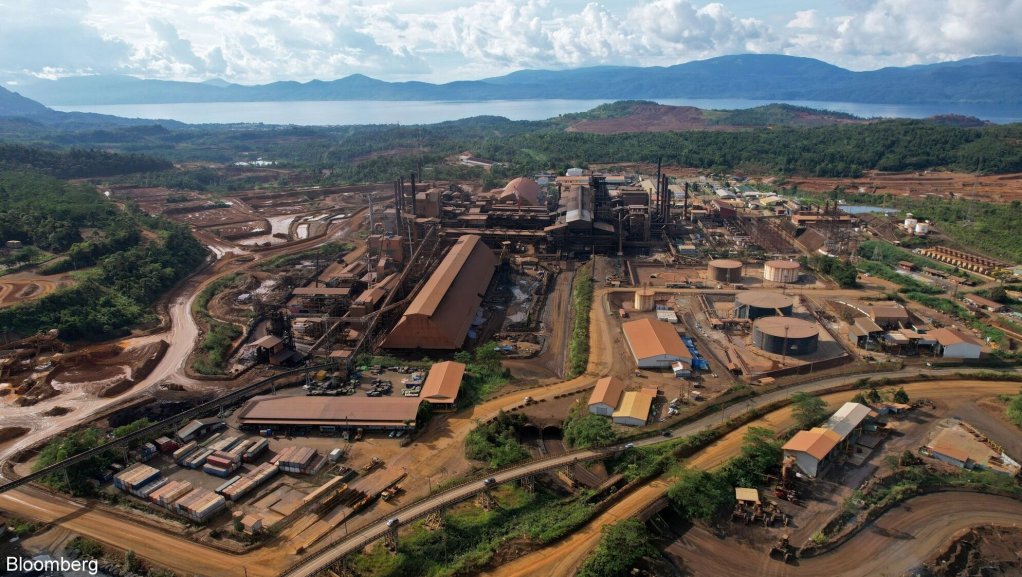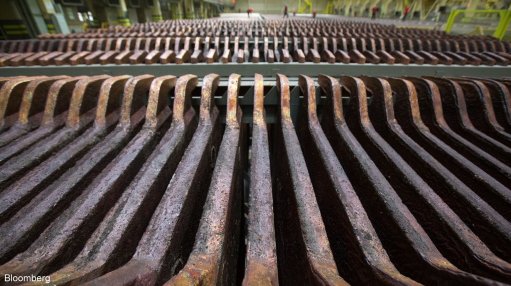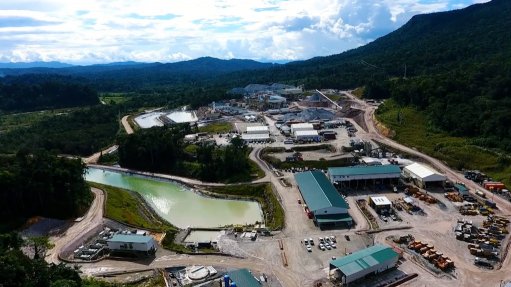Nickel faces existential moment with half of mines unprofitable


Indonesia's coal-fired nickel output is pricing out greener metal that has so far failed to command a market premium.
Many of the world’s biggest nickel mines are facing an increasingly bleak future as they wake up to an existential threat: a near limitless supply of low-cost metal from Indonesia.
With roughly half of all nickel operations unprofitable at recent prices, the bosses of the largest mining companies last week sounded a warning that there was little prospect of a recovery.
The potential collapse of nickel mining from Australia to New Caledonia comes at a time when western governments are scrambling to secure the supply chains needed to decarbonize the global economy. But in an ironic twist, Indonesia’s coal-fired nickel output is pricing out greener metal that’s so far failed to command a market premium.
Wresting control of strategic metals from China has become a focal point of Joe Biden’s administration. Yet while US officials have dashed around the world looking to strike deals for materials such as cobalt and copper, the heaviest reverse has come in Chinese-backed Indonesian nickel, a key component of electric vehicles.
Indonesia now accounts for more than half of world supply, with the potential to reach three-quarters of all production toward the end of the decade.
“There is a serious structural challenge as a result of Indonesian nickel,” said Duncan Wanblad, CEO of Anglo American, after his company took a $500-million writedown on its nickel business last week. “They don’t seem to be letting up anytime soon.”
Traditionally, nickel has been split into two categories: low grade for making stainless steel and high grade for batteries. A huge Indonesian expansion of low-grade production led to a surplus, and, crucially, processing innovations have allowed that glut to be refined into a high-quality product.
Commodity markets have always been susceptible to cyclical volatility, especially when sudden supply and demand imbalances get a push from wider macro upswings or downturns. But what’s happening in nickel right now is different, with the entire industry undergoing a structural shift that has upended forecasts and models.
For BHP Group, the world’s biggest miner, nickel is a rounding error, contributing mostly losses to profits that routinely break $30-billion a year. Yet in recent years the company has championed the metal, seeing it as a key growth market that will help offset its retreat from fossil fuels.
Instead it’s turned into a disaster.
This week CEO Mike Henry conceded that the company will have to make a decision on whether to shutter its flagship nickel business in Australia within the next few months. Having already written down the business’s value by $2.5-billion, Henry said he expects the market to remain in surplus until at least 2030.
That means the pain is likely just starting.
Macquarie Group calculates that about 250 000 t of annual production — equivalent to about 7% of the total — has been taken out of the market by closures, with another 190 000 of planned output delayed.
Combined with economic slowdowns in China and the US and the choppy adoption of EVs, nickel has been pummeled. The price fell 45% last year, and is currently hovering around $17 000/t. According to Macquarie, at $18 000/t 35% of production is unprofitable, while at $15 000/t that jumps to 75%.
Anglo’s CEO Wanblad, who is reviewing nearly all the company’s mines in bid to cut costs, said that he will give the miner’s nickel business time in the face of the Indonesian threat.
“Our nickel business will undergo a fulsome review in terms of holding its head above water and making a viable profit,” he said. “I’m not giving up on the guys to come up with a plan that might help them readjust themselves into a position where they can function effectively.”
Glencore, which has already moved to shutter its nickel operations on the islands of New Caledonia, is one of the world’s biggest producers with sprawling businesses in Canada and Australia. At current prices, that business will make just $500-million this year, with CEO Gary Nagle expecting prices to remain depressed.
“We see continuing strong production growth out of Indonesia,” Nagle said. “We do not expect significant price recovery in the short to medium term.”
With more than half a decade of oversupply ahead, more mines are likely to close before things get better. Should the market finally rebalance, that will leave Indonesia and China with even more market share then they already have.
Still, Indonesia’s rapid expansion has drawn criticism. Much of its production comes from coal-powered energy, giving it higher emissions per ton than rival producers, and its rapid expansion is eroding rainforests.
With little prospect of a near term recovery, western miners are pinning their hopes on state aid in the short term and a push toward customers — such as carmakers — demanding “greener” nickel in the future and being willing to pay more for it.
BHP this week called for the London Metal Exchange to expand its responsible sourcing policy to include environmental due diligence, helping to differentiate production from Indonesian and Chinese supply.
Still, as conceded by Glencore, so far buyers of nickel are unwilling to pay more.
“Right now there is not much of a premium in the market,” Nagle said.
Comments
Press Office
Announcements
What's On
Subscribe to improve your user experience...
Option 1 (equivalent of R125 a month):
Receive a weekly copy of Creamer Media's Engineering News & Mining Weekly magazine
(print copy for those in South Africa and e-magazine for those outside of South Africa)
Receive daily email newsletters
Access to full search results
Access archive of magazine back copies
Access to Projects in Progress
Access to ONE Research Report of your choice in PDF format
Option 2 (equivalent of R375 a month):
All benefits from Option 1
PLUS
Access to Creamer Media's Research Channel Africa for ALL Research Reports, in PDF format, on various industrial and mining sectors
including Electricity; Water; Energy Transition; Hydrogen; Roads, Rail and Ports; Coal; Gold; Platinum; Battery Metals; etc.
Already a subscriber?
Forgotten your password?
Receive weekly copy of Creamer Media's Engineering News & Mining Weekly magazine (print copy for those in South Africa and e-magazine for those outside of South Africa)
➕
Recieve daily email newsletters
➕
Access to full search results
➕
Access archive of magazine back copies
➕
Access to Projects in Progress
➕
Access to ONE Research Report of your choice in PDF format
RESEARCH CHANNEL AFRICA
R4500 (equivalent of R375 a month)
SUBSCRIBEAll benefits from Option 1
➕
Access to Creamer Media's Research Channel Africa for ALL Research Reports on various industrial and mining sectors, in PDF format, including on:
Electricity
➕
Water
➕
Energy Transition
➕
Hydrogen
➕
Roads, Rail and Ports
➕
Coal
➕
Gold
➕
Platinum
➕
Battery Metals
➕
etc.
Receive all benefits from Option 1 or Option 2 delivered to numerous people at your company
➕
Multiple User names and Passwords for simultaneous log-ins
➕
Intranet integration access to all in your organisation



















